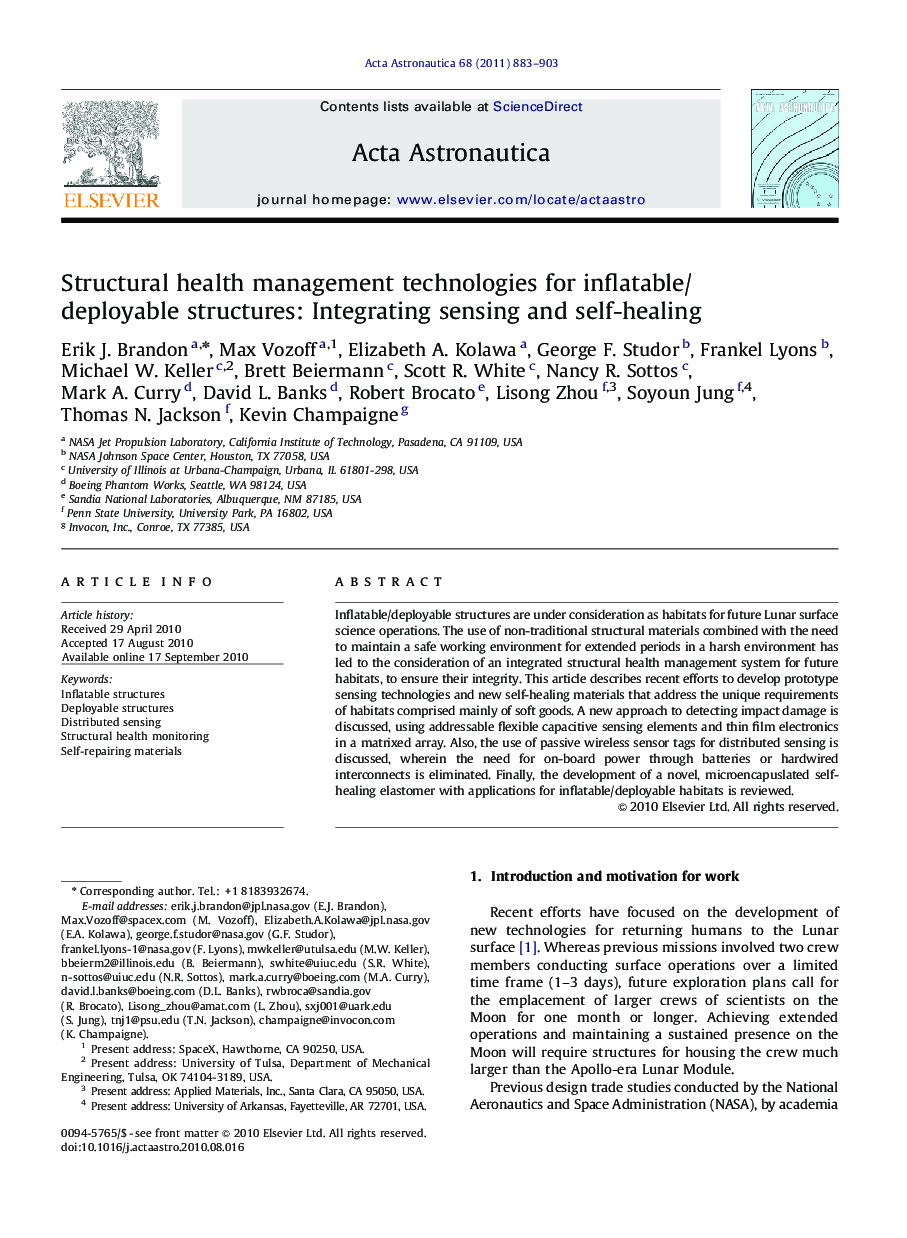| Article ID | Journal | Published Year | Pages | File Type |
|---|---|---|---|---|
| 1715910 | Acta Astronautica | 2011 | 21 Pages |
Abstract
Inflatable/deployable structures are under consideration as habitats for future Lunar surface science operations. The use of non-traditional structural materials combined with the need to maintain a safe working environment for extended periods in a harsh environment has led to the consideration of an integrated structural health management system for future habitats, to ensure their integrity. This article describes recent efforts to develop prototype sensing technologies and new self-healing materials that address the unique requirements of habitats comprised mainly of soft goods. A new approach to detecting impact damage is discussed, using addressable flexible capacitive sensing elements and thin film electronics in a matrixed array. Also, the use of passive wireless sensor tags for distributed sensing is discussed, wherein the need for on-board power through batteries or hardwired interconnects is eliminated. Finally, the development of a novel, microencapuslated self-healing elastomer with applications for inflatable/deployable habitats is reviewed.
Related Topics
Physical Sciences and Engineering
Engineering
Aerospace Engineering
Authors
Erik J. Brandon, Max Vozoff, Elizabeth A. Kolawa, George F. Studor, Frankel Lyons, Michael W. Keller, Brett Beiermann, Scott R. White, Nancy R. Sottos, Mark A. Curry, David L. Banks, Robert Brocato, Lisong Zhou, Soyoun Jung, Thomas N. Jackson,
